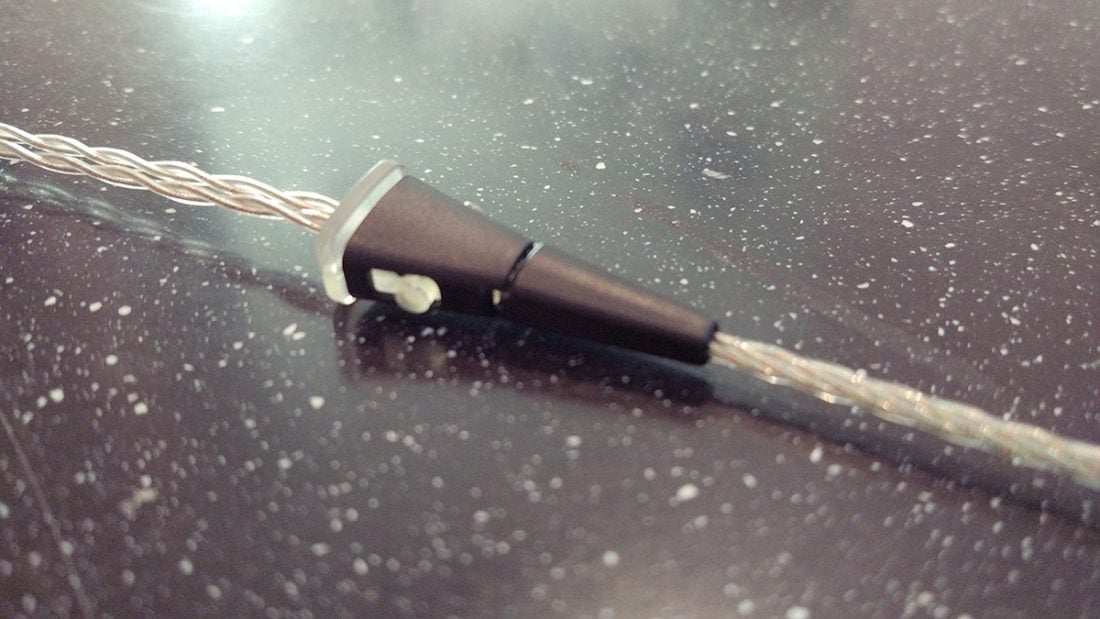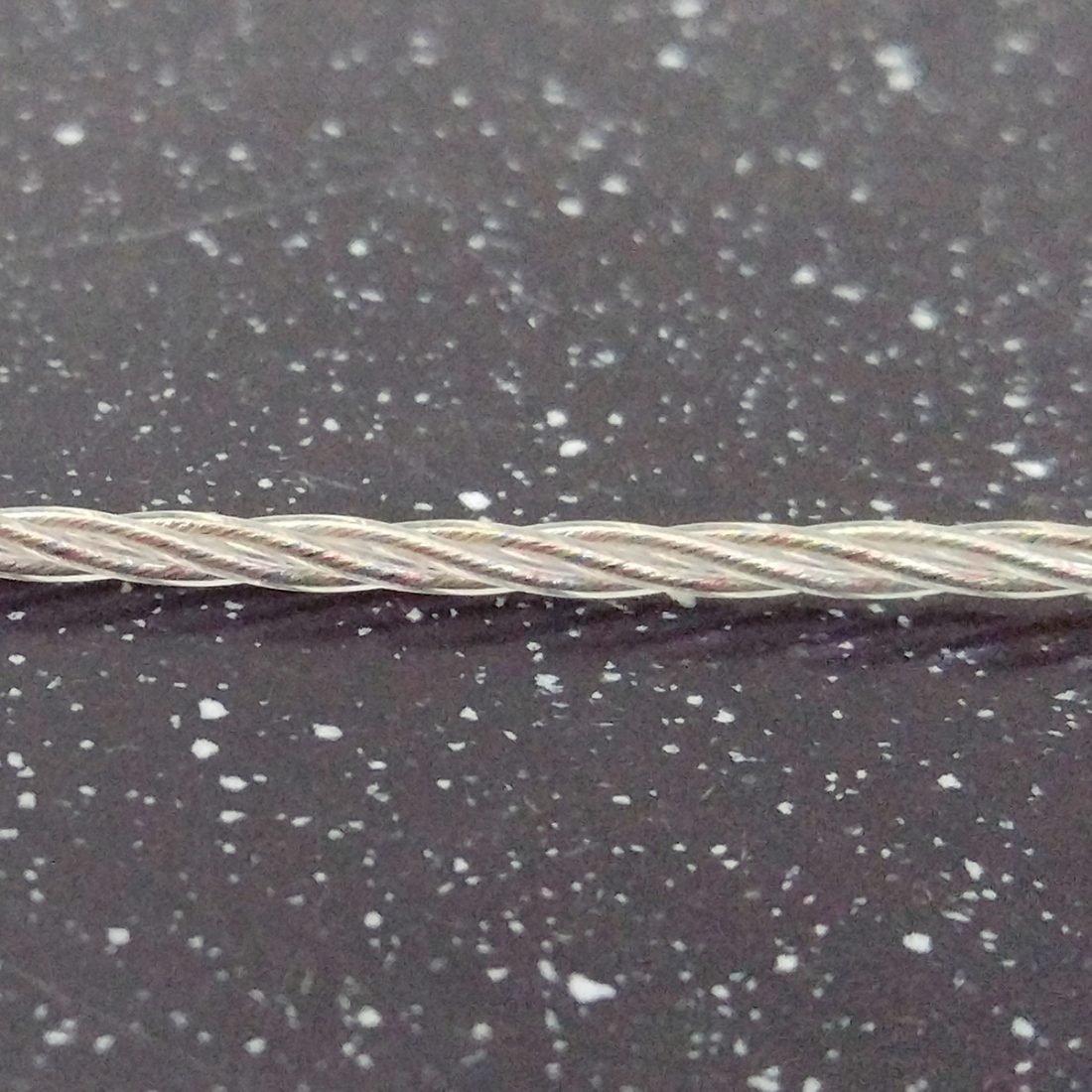This slideshow requires JavaScript. Cables. Ain’t that a can of worms. As divisive as pineapples on pizza, objectivists say cables bring no change to sound because they don’t measure any differently, subjectivists say listen with your ears you fool, and I say pineapples bring a sweet counterbalance to the otherwise overt saltiness of pizza. You can argue until the cows come home (do they ever?), but in the interest of objectivity, upgrade cables tend to bring improvements to build quality, durability and looks compared to boring ol’ stock cables. With that in mind, I write about sound impressions as I hear them, but you can skip them if you do not agree, even if you’re missing out on some terrific writing lol. Buy “Linum SuperBaX” here
An Affordable Upgrade
In the grand scheme of things, Linum makes generally affordable upgrade cables, from the EUR79 Music to the top-of-the-line (TOTL) SuperBaX which I’ll be reviewing today. I first heard of Linum via their most popular product, the BaX. I took notice because it sounded similar to Baxter, Ron Burgundy’s faithful canine in Anchorman, one of my favourite movies ever.
Lightest and Thinnest Cable
I digress. The BaX had a reputation of being the lightest and thinnest cable in the market. Anyone who wanted a cable that was not only comfortable but felt weightless, swore by it. I bought one and true enough, the weightlessness was superb, and you had to see the cable in person to appreciate its tiny form factor. However, it tangled too much for my liking, so much so that I spend 5 minutes at the start of each listening session untangling the BaX!
A New Flagship
Linum hope to learn from customer feedback for their flagship, the SuperBaX. Now in its second generation, the SuperBaX boasts 4 braided ultra-thin silver-plated-copper wires, with each wire consisting 42 strands. It’s twice the size of the BaX, but still weighs less than 10 grams. Currently, the SuperBaX retails for EUR199 and is available at the official site. As far as customisation goes, you have a choice of MMCX, 2-pin or T2 connectors. The length and jack are fixed (50” and 3.5mm single ended, respectively), but you can contact Linum to show interest in the balanced 2.5mm or 4.4mm versions so they might produce it in future. Fingers crossed.
Quick Specs
Price: EUR199 Connectors: MMCX, 2-pin or T2 Jack: 3.5mm single ended Cable length: 50″ Impedance: 0.75 ohms Weight: Less than 10g
Equipment Used:
Sony NW-WM1A “K” Modded, FW 2.0 Jomo Audio Flamenco (both switches down)
Albums Listened:
Amber Rubarth – Sessions from the 17th Ward Ed Sheeran – Divide Fleetwood Mac – Rumours Macy Gray – Stripped
Linum SuperBaX Packaging and Accessories
You carry certain expectations depending on what you buy. When I buy a book, I expect nothing else but the book itself. If it came with a CD, or preview pages of an upcoming volume, or saucy girlie pics, then it’s a welcome bonus. For cables, the standard packaging is just the cable in a ziplock bag. So when Linum provides a robust zippered case large enough to store two pairs of earphones, you smile and say thank you. What’s more, the case is neatly compartmentalised so you can store small items in its pockets, like ear tips or a photo of your beloved steak dinner last evening. Well done! Rounding off the accessory set is a ziplock bag (in case you’re old-fashioned and need one to feel complete), and a user manual. The manual details the new chin slider locking mechanism, and how to untangle the cable. Pretty useful for someone who doesn’t read manuals.
Design and Build Quality
The wires are silvery with alternating copper, red and blue accents, but it’s very subtle. From the connectors, Y-split to the jack, the design is a bit boring. Function over form, guys. The connectors are tiny and disappear into your IEM sockets. The markings are clear, red dot for right and blue for left, with the dot pointing upwards as you insert the connectors. The Y-split and cable cinch in black plastic look handsome in a tuxedo-tie type of way. The L-shaped jack also conforms to the black plastic motif. My only lament is the lack of strain reliefs throughout, just in case I Weird Al Yankovic the cables too hard by accident.
Unique Cable Cinch
As for the wires, they are strongly built. I inadvertently tested out the tensile strength by pulling hard on the cables when I thought the cable cinch malfunctioned. That’s what I got for not reading the manual. The cable cinch (or chin slider) only moves after you pull the transparent rubber tab up. Then, pinch both sides of the cinch to adjust it up or down. This is a smart move by Linum to keep the chin slider locked in place.
Ergonomics and Comfort
For a cable made to appreciate its slim and tiny form factor, ergonomics play a key role. The cable is soft and supple to the touch, coils easily enough, with a bit of memory effect. The cable uncoils itself sometimes, but for the most part, stays in shape. So they photograph rather nicely for this review as well. Now, does it tangle as bad as BaX? It’s twice the number of cables, so is it twice as bad? Thankfully no, but it’s not totally in the clear either. On its own, the cables untangle very easily, just hold them by the connectors and let the cable hang down, in most cases, it will untangle by itself. However, with IEMs connected and kept in a case (like in most cases) it tends to tangle by itself again! Curses.
Supreme Comfort
As for comfort, in a word, wow. In two words, holy crap. This is by far the most comfortable cable I’ve ever worn. Just like the original BaX, the SuperBaX felt weightless on my ears. This must be what it feels like when astronauts listen to IEMs in space. This is where Linum redeems all its “I told you so” points. In a crowded market where people are looking at 8-wire pure silver behemoths for the sake of better sound, Linum shows how it’s done.
Sound Quality
The basis of any cable sound review lies in comparisons. Most of what you’re hearing is brought out by the transducer and audio player, with about 10% of the sound signature give or take, handled by the cable. I do not have golden ears, they’re hairy and fleshy and filled with wax just like yours, but picking up the subtleties between cables becomes easier with practice.
Baseline – Plastics One
The Plastics One forms the baseline of all my cable sound impressions, and what I report are based on deviations from this sound. You might have used it before, since it’s given free with most custom IEMs. When we talk about stock cables, this is it. Cables of all materials and builds come in many flavours and colourations, and Plastics One serves as the home base, the standard by which all upgrade cables must surpass, or fade into obscurity. Critical listening was done after 100 hours of burning in. Not that Linum specifically recommended it, I’m just old-school that way. I believe in equipment breaking-in as much as my ears accommodating to the given sound after an amount of time. The IEM of choice is Jomo Flamenco, the most neutral IEM in my arse… I mean arsenal.
Overall Sound Signature
The SuperBaX aims to please. Its signature is accessible and easy to like. To my ears, the sound is neutral, with slight warmth and excellent tonal accuracy. I’m using jargon to hide my lack of expertise (as always), but basically, the SuperBaX sounds realistic and fun. It also has a balanced sound from top to bottom, with a hint of colouration. One of the most obvious things I’ve noticed when switching from Plastics One to SuperBaX is that the imaging takes a big step up. Spatial cues are much easier to focus on, thanks to a resolution bump across the spectrum. Plastics One smears the soundstage with thick, clumsy notes, and SuperBaX reins them in and provides perspective and focus. But is it worth EUR199? Let’s go blow by blow.
Bass
We want our bass, but not too much. We want to feel it but not hear it bleed everywhere. Rich but not bloated, controlled but not overly so… finding a life partner is probably easier. SuperBaX has superb bass (pun intended) control. It is tight and punchy in attack, with good body and slam (but not a body slam). Quantity is well-measured and well-rationed, it isn’t overpowering like how raw onions mess up an entire dish. Detail levels and dynamics are splendid too. Note texture is palpable, with a hint of wetness that helps in smoothness; while rolloff is natural and lends a tinge of warmth to the signature. In a keen balance of showing off and reserving your power, SuperBaX deserves some praise. No need to show off when you’re awesome all the time, they say.
Mids
The meat of the music is here. Continuing the onion analogy, you take nasty raw onions and simmer them in a slow fire until they caramelise, and voila, it unites the whole dish. The mids are euphonic, sweet-sounding and just a bit coloured, pulling your focus towards them and addicting you to the music like MSG. I love how they render the mids. Positionally, they stay where they are, not pulled forward or pushed back, but each individual note is well-sculpted from attack to decay. There is well-defined air between the notes, so you hear more detail, yet notes remain smooth and effortless as ever. For tone and timbre, they do no wrong, sounding lifelike with some note richness and body. This is a midsection best enjoyed with the lights dim, drink in one hand, and waving your other hand to the music like the maestro you are.
Treble
I used to play a computer game with characters from the comic Dilbert, and one of the mini-games involved pressing a “discipline” button to increase productivity. That basically meant sending an electric jolt to your character. Short of prodding my colleagues with shock-sticks, the treble here seems to have undergone disciplinary treatment too. As is consistent with the rest of the signature, treble notes are tight, well-textured, and transparent. Notes hit quick, provide a playful sparkle and gobs of air, and decay before overstaying its welcome. And right at the top, the treble is relaxed and smoothed out, cancelling out the worst parts of the treble, brittleness, and harshness. This is fatigue-free, pleasant listening through and through.
Soundstage and Imaging
Good cables normally excel here, and SuperBaX makes it all the more obvious. With a generous and spacious black background, music is lovingly played in their own space, putting you in the middle of the action. The space increase from Plastics One to SuperBaX is apparent in all dimensions, you hear the presentation wider, deeper and taller; maybe even a fourth dimension. As an effect of the roomier setting, separation and imaging are exemplary. The stage set is three-dimensional, almost like in a recording studio. You can pinpoint where each element of the music is coming from, and yet the music sounds unified as a whole, not disjointed or diffused in an artificial kind of way. It’s, in my opinion, one of the chief selling points of the SuperBaX.
Comparisons
Null Audio Ethos
Comparing like for like, the Ethos is the only other silver-plated copper cable in my collection. It’s an entry-level cable priced at SGD79, and was once given free along with Advanced AcousticWerkes’ (AAW) flagship IEM, the W900. It’s made of 4 wires of 5N purity CGOCC-A silver-plated copper wires with a gauge of 26AWG.
Soft and Flexible
I love how Ethos handles. It’s ultra soft and flexible, with just a little memory effect so it doesn’t uncoil at will. The lack of a proper neck cinch effectively ruled out any hope I had for using this cable in the long run though. SuperBaX is equally soft and flexible, with even less memory effect, and definitely lighter!
Metallic Tonality
Besides the ineffective neck cinch, the sound is where Ethos falters dramatically. The upper mids and treble are boosted rather unnaturally, lending a metallic tonality that is as hard to listen as nails on a chalkboard. Yes, details are more apparent, but it’s hard to focus when cymbals are suddenly at the forefront of the music. The stage size is small too, so the upper mids and treble bled everywhere like a bad wound. It effectively lost before I even compared the SuperBaX seriously.
Effect Audio Ares II
Ares II is like the teacher’s pet of upgrade cables. It’s very easy to recommend it based on its price-to-performance ratio, with noticeable sound changes at the USD150 mark. It’s made of 4 wires of 26 AWG gauge, UPOCC Litz copper, and is the stock cable provided by Jomo Audio and Empire Ears for their custom IEMs.
Memory Effect
The chrome connectors, carbon fibre Y-split and jack are made in-house and look sleek and modern. The wires have an attractive metallic bronze colour and build quality is also up to scratch. However, the cable is not as soft and malleable as the others in this review, and has quite a lot of memory effect. The cable uncoils itself readily and does not behave in photography sessions. Boo hiss and all that lol.
Bass Body and Bloom
Now onto the most important comparison: sound. Ares II is touted to have an anti-copper sound, with emphasis on resolution and transparency and without an overly warm tilt. I’ll tip my hat to that if I had one. The bass of both cables sound remarkably similar, with just the right amount of body and bloom. The trebles are more alike than not too, with SuperBaX having a slight edge in detail level and air.
A Battle of Mids
Where they differ is in the mids presentation. Ares II is more in-your-face and frontally-placed, demanding attention like Garfield demands to be fed. This can be distracting, as certain instruments are pulled to the forefront involuntarily. Ares II’s emphasis on centre and upper mids means they can sometimes sound grainy and harsh, in a case of too much of a good thing. Timbre remains good in most cases, on par with SuperBaX. SuperBaX avoids the above pitfalls and carries on its work nonplussed. It carries a more refined sound and demonstrates that true power lies in control. SuperBaX might be the winner here, but whether the price increase from Ares II is worthwhile is up to you.
Han Sound Audio Redcore
The Redcore is one of my favourite cables. It’s made of OCC silver and OCC copper strands, with a distinctive deep red nylon sheathing. Redcore turns heads and is kind of a big deal, by my own admission. It’s priced at SGD649, and yes it’s nuts pricing. I just wanted to see how the SuperBaX competes against a cable twice its price.
Pristine Luxury
In terms of hand-feel, nothing comes close to the pristine luxury provided by the Redcore’s nylon sheath. The cable is supple, coils accordingly, and has no memory effect so it stays the way you want them. The Y-split and Furutech jack really show off where your money went to. SuperBaX looks positively humble in comparison and yields in nearly every aspect physically, except for lightness.
Sound – Technical Masterclass
As for sound, Redcore is a purist. It resolves extreme amounts of detail and stays close to neutral, with a slight mids emphasis. Mids are brought out beautifully and vocals shine in the spotlight. Bass and treble textures are easily heard, and the whole soundscape is spread across a huge stage, with stellar imaging and separation. It’s an all-rounder cable designed to please nearly everyone. The SuperBaX is all about tone. Its warmish, timbre-focused character lends fuller and rounder notes to the signature. Its detail levels are nowhere near the Redcore, but bass bloom is longer and mids are meatier. The soundstage is also smaller, with fuzzier imaging compared to the clean Redcore sound. It is techincally inferior, but will be more ideal for those who prefer a smooth, intimate presentation. SuperBaX has no reason to hang its head in shame.
Final Words
I’ll be honest. I haven’t heard the Plastics One in a long time since most of my IEMs have upgraded cables, and coming back it’s easy to see (hear) why. The Plastics One is basic in every sense. It presents music, sure, but notes are thick, plodding and lacks definition, the soundstage is small and imaging is smeared. For the music connoisseur who demands the best of everything, changing out the cable to literally anything else, might be an upgrade. The Linum SuperBaX deserves a worthy mention for just that. In a world where the affluent can spend USD1000 and over on TOTL cables, the SuperBaX sounds like a value-for-money purchase too good to pass up. You can buy the Linum SuperBaX here at their official website.








